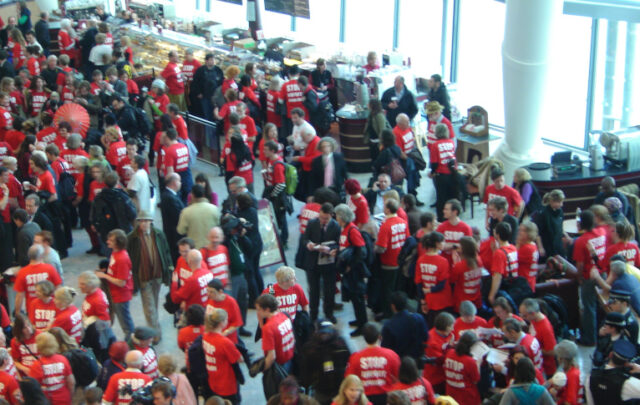Ed. note: This excerpt is taken from the book Tir The Story of the Welsh Landscape, by Carwyn Graves and published by Calon Press. You can find out more about the book here.
Sheep-gathering
This hel y mynydd – or ‘mountain sheep-gathering’ – is a co-operative exercise, only possible because of strong relationships coupled with close, established regulation. In this particular case, all the land in question has been owned for several decades by the National Trust, which acquired it from the estate of Lord Penrhyn, the despised slate magnate in this area. But land management among the commoners is governed not just by the owner but by a grazing association, which in the case of where we are – Llanllechid – happens also to be the community council. They are tasked with ensuring that stock levels are kept to appropriate levels, that licences are adhered to and that any disputes are resolved. They are also responsible for employing a Setiwr (English ‘escheator’), who as Nigel explains must make sure that stray sheep (defaid diarth) picked up in any of the gatherings are reclaimed by their owners in neighbouring farms and also auction off any unclaimed or orphan lambs found at the time of the gatherings in July and September. Usually these are the lambs that have no earmark to identify which farm they belong to.
And then, the flocks being gathered and any stray sheep identified, the buarth empties, ready for its next use in a few months’ time. As we wander on to another buarth lower down the mountain (Buarth Bwlch Molchi), Nigel muses on the farmers’ own attitudes towards this remarkable continuity in farming practice, a topic that he has researched over the course of the last decade.
There’s certainly a lot of family pride involved in this, and they’re all quick to explain how everything works to me. And it’s worth saying that they all know these mountains intimately – they’re up here regularly, at different times of year. You’ve got to know all the names and distinguishing features in this environment when the sheep are up here and they are your livelihood.
And though this remains true for farmers and shepherds in areas like the Carneddau today, this need-to-know and name-your-environment according to its natural features and function within the rural economy held much more broadly across pre-industrial Wales. This is particularly true of landforms, where Welsh has a noted wealth of terms for hills, slopes and other features of mountainous country, from esgair (a long, prominent ridge) and cefnen (a low-lying, less prominent ridge) to llechwedd, rhiw, bron, goleddf and llethr (all variations on the theme of ‘slope’). Why then does the term mynydd seem so unspecific in its use, covering everything from Snowdon to what looks like nothing more than low-lying heathland?
The answer, as suggested in chapter 2, lies in setting aside a topographical approach to the landscape and adopting in its stead a pre-modern agricultural view. Here, in a country where much of the land is not particularly fruitful and is, in the presence of grazing animals, primarily useful as rough pasture, the area for the summer grazing of such animals was formerly by necessity quite extensive. The areas that lent themselves to this kind of use were naturally the higher ground in much of the north and centre of the country (what we might call mountains), but in other areas they might well be rolling hills and moors or even flattish heaths.
Restoring peatland
We make it onto the open gwaun where the land is level enough to allow water to collect and a bog to form, and high enough (over 600m) for rainfall to be substantial year-round. A lot of work has taken place here. Among the heather, and clearly spreading, are dark pools with young, growing sphagnum. Dion is visibly pleased at the progress here since his last visit a few months previously. Bending down, the process that has taken place is clear. Low ridges (or ‘baffles’) made of peat themselves have been positioned at regular intervals across the ditches and gullies to slow the flow of water and encourage the formation of the types of pool amenable to sphagnum growth. These ridges are only a few dozen centimetres in height, but their effectiveness is visible, with languid pools forming in a sequence behind them and slowly filling the gully with a watery cover. This is coupled with large-scale work to re-cover the bare, brown peat ‘hags’ by stretching out lengths of native vegetation to around 1.5 times its length in such a way that the areas of bare peat are once again reintegrated into the bog, stopping emissions.
In this one location of over 250 hectares, this has clearly been a substantial piece of work, and I am eager to find out who it was that came up with the idea and drove it to become reality. Was it the National Park, government or a conservation agency? ‘Actually,’ Dion says with a smile, ‘It was the farmers at the head of this valley.’ The park has spent decades building close relationships with farmers and is used to offering them support to implement schemes that they want to see take place on their own land as part of upland payment conditions. It’s a good example of complex, landscape-scale working in the public interest, where Welsh Government disburses grant monies originally supplied as part of green financing carbon credit schemes, that the National Park then implements in the field at sites selected at farmers’ own initiative. Here, six farmers had banded together to have the peat on their mountains restored and to have nature-friendly hedges laid on their valley land; the cost to the green financing purse lying at around £80,000 all told.
The cumulated benefits for what is substantially less than the price of a house astonish me. Restoring the peatland would be an eminently sensible investment for society even if it only resulted in the cessation of CO2 that they currently emit; but, in reality, their restoration to growing, living ecosystems makes them highly effective carbon sinks.
But as well as the 4,500 tonnes of CO2 this place will now lock in each year (equivalent to the annual emissions of 700 westerners), the recreated pools and growing peat also substantially lessen flood risks downriver. The filtering effects of the bog plant life, coupled with the covering up of the eroding hags (which previously stained streams and rivers brown in heavy rain), also combine to improve water quality, saving large sums of money to water companies and the public purse.
The restoration of the peatlands also leads to habitat for precisely those wetland species – of plants, insects and birds – that have suffered so much under the intensification of agriculture. Here, a native carnivorous plant, the sundew, springs up from the bog in summer, trapping insects in its ‘dew’ to supplement the sparse fare it can otherwise glean from the bog’s nutrient-poor environment. Also endemic to these places is cotton grass – plu’r gweunydd – which provides food for the rare large heath butterfly, that can only survive here. Bright yellow bog asphodel, cranberry and bog rosemary grow among the darting Golden ringed and Black Darter dragonflies that thrive in these environments. And the thrumming insect life in a healthy bog provides food for birds that have been declining precipitously in recent decades, including the golden plover, curlew and, higher up the food chain, hen harriers.
It’s too early to know which of those species are slowly recolonising this mountain bog, but assuming the rewetting holds, the potential for these species to return is now there. Promisingly, at an upland bog rewetted just a dozen miles away in 2017, curlews and golden plovers had both returned to nest by 2021 after decades of absence. All this would be enough to suggest peatland restoration should be a matter of urgent policy priority, and this becomes an irresistible conclusion when the lack of negative effects on upland livestock farming are factored in.
I ask Dion about grazing on this peatland now that the restoration work has been done. ‘Oh, we absolutely want this area to continue to be grazed – there’s no question about that.’ With large areas of spruce plantation still common over upland Wales, one darkening the horizon barely a mile to our west, the potential for self-seeded spruce to arrive on these bogs and establish themselves, thereby drying out the land again, is real; livestock mitigate that. ‘We would be looking at something in the region of 0.2 livestock units per hectare to help keep the bog in a healthy state. But that can be sheep or cattle or, ideally, both.’ The key thing, it turns out, is that this is principally summer grazing, between late April and early November – in an echo of the long-established practices mandated, as we have seen, under Welsh law. But having the bogs restored has a real practical benefit for farming with sheep in that it keeps them both safe and clean. When this mountain was full of those hags of bare peat, they would dirty the sheep’s fleeces, and then the trenches and ditches were also a real problem because sheep would fall into them. Dion tells me he knows of farmers who have lost dozens of sheep over the years to them.
These bogs are of incalculable value both to wildlife and to human society, and that will be as true over the coming century for carbon sequestration as it has been over the past few millennia of dependence on them for fuel. But even these extraordinary places are at most a semi-natural ecosystem in our context, where human influence from as early as the Mesolithic is likely to have had a substantial influence on their formation and spread; they are, just like our woodlands and pastures, semi-cultural creations. These peatlands have been with us, covering much the same surface area as they currently do, for something in the region of 4,000 years. There is some evidence that in slightly less oceanic parts of Wales more amenable to tree growth, such as the Berwyn mountains, the major spread of peat first took place only around 2,500 years ago, and in the Preseli mountains as recently as the early medieval period.
Even after this, upland environments like any other went through cycles of change in response to grazing pressure and other land-use patterns, but studies of pollen and plant fossil data demonstrate that, these normal fluctuations aside, most of the degradation and floral impoverishment in the mountains of mid Wales took place in the twentieth century. Strikingly, the paleoecological data show a greater proportion of sphagnum than currently, with recent declines in sphagnum coinciding with significant increases in invasive Molinia. As with all the other ecospaces in the Welsh landscape, a notable downturn in their vitality and quality has occurred within the lifetime of the oldest generation of people alive today. Thousands of years of human management stretched and squeezed these upland bogs, but the data clearly suggests that it was only with the fossil-fuel driven changes to our farming and land use that their condition drastically worsened.





